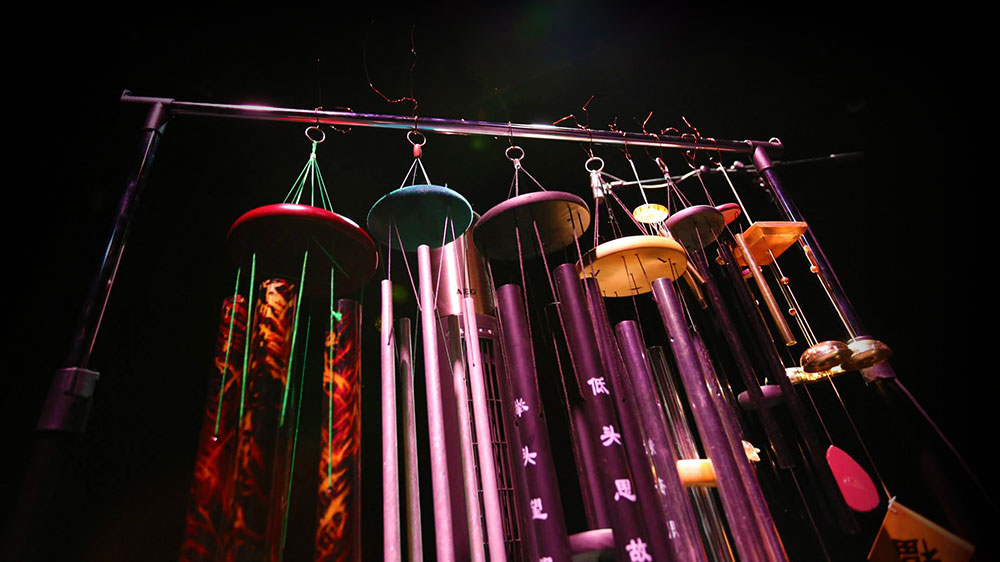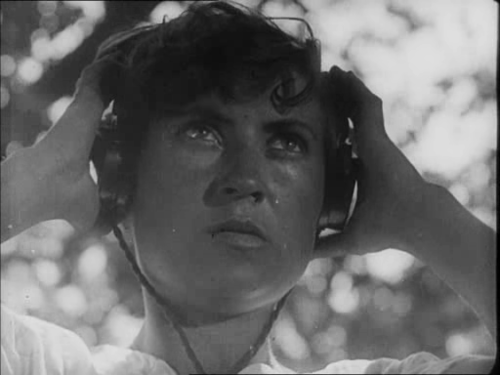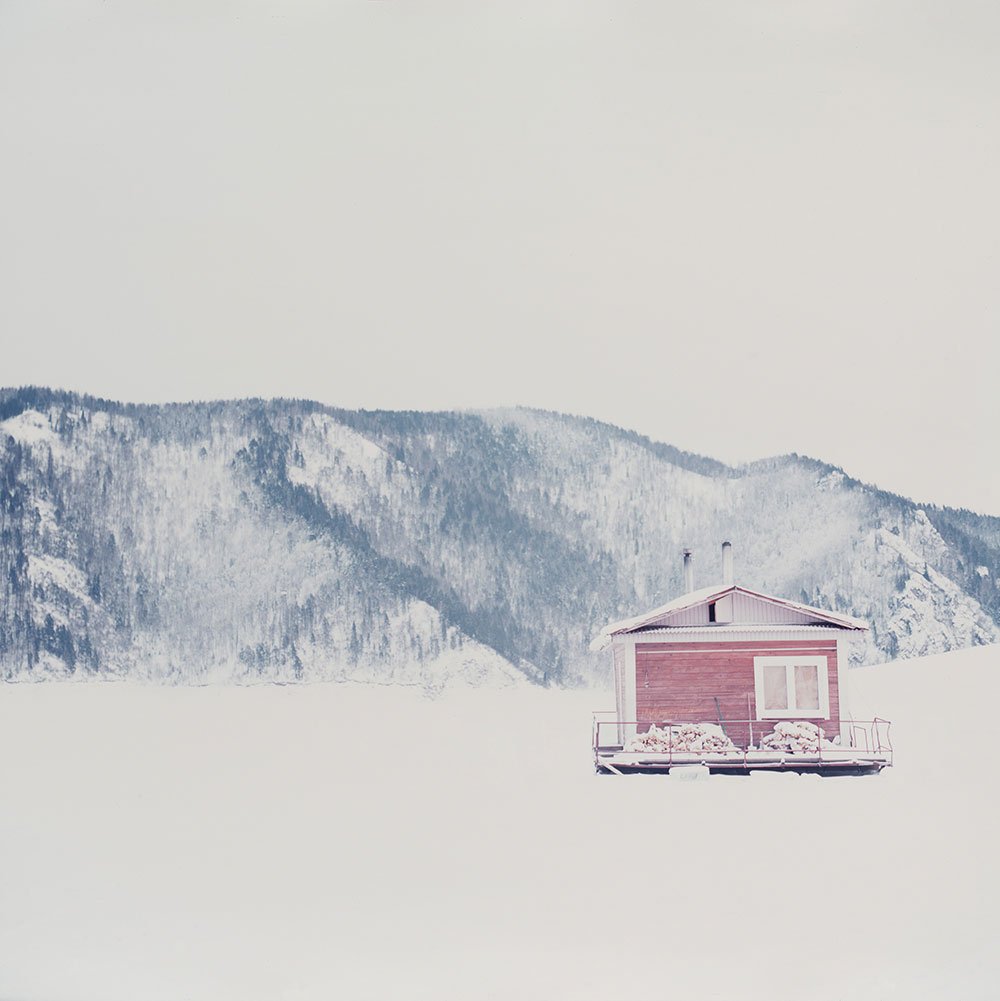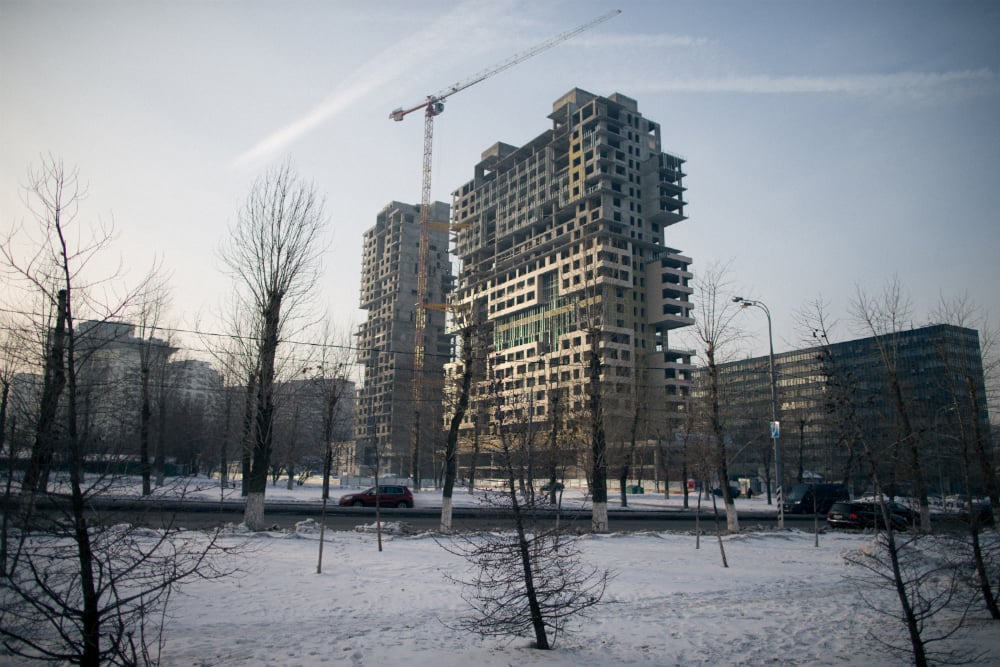Seeing sound: the gallery where the sonic dreams of the Soviet avant-garde live on

Soviet sponsorship for sonic research led to the invention of the first electronic instrument, the theremin, in 1920. In St Petersburg, the Floating Sound Gallery, Russia's first sound-art platform, picks up where these avant-garde experiments left off
A small space in the New Stage building of St Petersburg’s Alexandrinsky Theatre. Inside, the silhouettes of people seated in a circle of chairs are discernible through the darkness, as are the sounds of — no, not music, but a density of rasps and whistles, the experience so alien that it’s difficult to classify the event as a concert.
Some audience members close their eyes, engrossed in the sound; after 20 minutes of silent incomprehension, others gloomily get to their feet and leave, followed by those who aren’t quite as brave or decisive. An hour in and there’s only a handful of people left, who are brought back to reality by the gradual ebbing away of the sounds.
The light from two monitors standing in the corner illuminates the faces of two men. One of them, Anton Iakhontov (aka Patrick K.-H), ranks among Russia’s most successful sound and media artists. His colleague is Oleg Markov, a renowned composer, musician, sound artist, and editor of various contemporary music magazines. Together, they curate St Petersburg’s New Stage’s Floating Sound Gallery — Russia’s first sound-art platform.
Working with sound art is difficult, not least because hardly anybody — artists and sound theorists included — can give the term, which gained wide currency in the 1990s, a precise definition. Debates surrounding sound art tend to focus on the boundary-line that divides it from music. Theorists often make the distinction by referring to the ways in which sound art interacts with the space it is heard.
“In part, I do agree with this,” says Oleg Makarov, “but for me it’s just one of a number of specific variants. It’s pretty difficult to come up with a nutshell explanation of sound art. Here’s an alternative characterisation: sound art is founded on and typified, above all, by work with the nature of sound, its intrinsic components — timbre, physics, site-specifics — as compared to music, which works with sound’s structure and form.”
Others define sound art by its “extra-temporal” nature. A sound-art composition has no beginning or end: you can listen to it for an hour or for two, for an entire day or a mere five minutes. Sound art does not deal in categories fundamental to music, development being alien to it; it is not an event but a condition, a duration, a length of time. A sound-art composition is first and foremost an environment for listener immersion.
“Sound art,” remarks Anton Iakhontov, “creates an entirely new paradigm — one where time, in and of itself, is space. We can thus speak of the creation of a new spatio-temporal continuum.”
Today there’s a wide range of establishments that play host to musical performances, from concert halls and theatres to night clubs, where the concert format is frequently eschewed. Sound art, too, may exist in various milieux: in public spaces, outdoors, or in galleries specially fitted out for the purpose.
The idea of establishing such a gallery occurred to Anton Iakhontov long ago. In the early 2000s he was studying at Moscow’s Theremin Centre, created by Andrey Smirnov, which was the only experimental music institution in Russia at the time. “It was a zone of refuge”, Anton recalls. “Leaving its confines, I’d enter a world where all this was surplus to requirements for everyone.”
“The situation today is much better than it was even three to five years ago. Sound pieces are becoming more prevalent in galleries”
Russia has a formidable legacy of sonic experiments conducted in the avant-garde and hopeful 1920s. In the first years following the revolution, the eminent researcher, physicist and inventor Lev Theremin, in whose honour the Theremin Centre was named, was touring the land of the Soviets with his brilliant invention — the thereminvox, history’s first electronic musical instrument. Around the same time, the prominent composer and music theorist Arseny Avraamov was conducting his Symphony of Sirens in Moscow and Baku; this work utilised factory sirens and machine noise in lieu of musical instruments. But the situation in the country was changing rapidly, and by the 1930s, sonic experimentation had been completely and definitively excised from the Soviets’ list of legitimised artistic practices.
The 1990s became a new era, if not of hope and utopia, then of total uncontrolled freedom. Andrey Smirnov’s Theremin Centre, established under the auspices of the Moscow Conservatory in 1992, initially regarded its primary goal as being the resurrection of the ruptured links between the experiments of the early twenties and current forms of work with sound.
Seeing the desired result of its endeavours in the creation of a nurturing milieu for the development of musicians and sound artists, the Theremin Centre was not only an educational and research centre but also — not insignificantly for the Russia of the early 90s — a hub with computer access.
Although the Theremin Centre was completely isolated, this refuge for Russian sound artists had extensive links to the outside world and played host to visits from major theorists and practitioners of sound art, one of whom was the artist Michael J Schumacher. Inspired by Dream House, an installation by artist Marian Zazeela and composer La Monte Young consisting of a sound- and sculpture-filled space, Schumacher inaugurated the Diapason Gallery in New York in 2000. The idea behind the gallery is simple: it’s an environment equipped with a spatialised sound system in which sonic art pieces play without interruption.
The idea of relocating this American-conceived format to Russia came to Anton Iakhontov after a stint as artist-in-residence at the Diapason Gallery in 2008:
“I got a residence without even knowing what it’d really entail. But the trip inspired me massively. First impressions are always very important for me, and while I was there I had a proper freakout, I was just flabbergasted. I’d heard about it many a time but never seen it. And to actually see it was very important.”
Making the same idea happen in Russia proved less than easy: six years passed before the project became a reality. 2013 saw the construction of the Alexandrinsky Theatre’s New Stage building in St Petersburg, which initially positioned itself as an experimental platform.
“I was collaborating extensively with Moscow theatres and dance troupes,” Anton recalls. “And it was all working out with the exception of the sound art gallery. I offered the New Stage numerous options for collaboration as well, but in St Petersburg, strangely enough, it was this project that became a reality.”
The Floating Sound Gallery opened its doors in the summer of 2014. Anton believes that “the name of the gallery is a very felicitous one on account of its polysemy: in English it can be interpreted both as the ‘gallery of floating sounds’ and as the ‘sound gallery that floats’.”
Two lines of action became priorities: the aim was to exhibit key examples of spatialised sound pieces from abroad (works by Michael Schumacher, Klaus Filip, Thomas Grill and Elisabeth Schimana fall into this category) as well as pieces by Russian sound artists and composers (such as Yuri Didevich, Aleksei Borisov, Vladimir Rannev, Anton Iakhontov and Oleg Makarov).
The gallery is not yet functioning as it was originally conceived to; sound art pieces in the Alexandrinsky Theatre can be heard only two days a month rather than daily. And yet the gallery’s existence has created the prerequisites for massive change in the reception of sound art in Russia.
Oleg Makarov believes that on the whole, the situation today is “much better than it was even three to five years ago. Sound pieces are becoming more prevalent in galleries, and there now tends to be a more attentive attitude to sound in theatres. So far this isn’t happening across the board, but curators and directors who’d previously never even contemplated the existence of sound as a phenomenon in nature are now starting to pay attention to it.”
The conception of a sound gallery, by some quirk of fate, on the site of an academic theatre, shows that, just as in the avant-garde heyday of the 1920s, government support is indispensable for such initiatives to flourish. It’s hard to gauge the prospects of Russian sound art but positive developments cannot be overlooked: after all, as Oleg Makarov asserts, “People need to remember that they have ears as well as eyes.”



